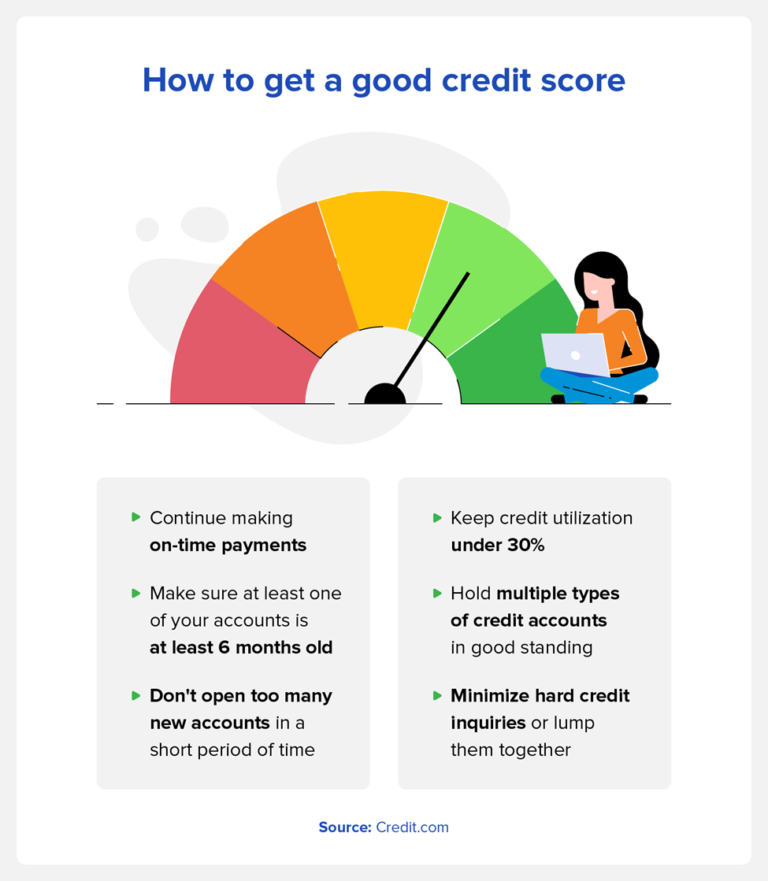Today I head to Phoenix area for the AzAMP annual conference, and am reminded that, “Change is inevitable, except from a vending machine.” The mortgage industry is constantly changing, although Freddie and Fannie have been a somewhat stabilizing influence. But explaining to someone not in the mortgage business what they, the government sponsored enterprises (GSEs) do, is not easy, but in another one of his Mortgage Musings, attorney Brian Levy offers his thoughts on 15 years of being in conservatorship and whether that means it’s time to drop the “S” in GSE. Let’s just hope they don’t become another Amtrak. (Sign up for Musings here.) One topic that has come up at a few conferences, besides Agency buybacks, is demand for “LIP” and “VLIP” borrowers. Are F&F pushing hard for Low Income Purchase and Very Low Income Purchase business, and requesting high percentages of those products with the “threat” of hitting their overall pricing? Address any questions to your Agency rep, but some would say that in this environment, with everyone fighting for every deal and reduced volume, it doesn’t seem fair or even logical to have such a high demand for sellers with something outside of their control. (Today’s podcast can be found here and this week’s is sponsored by Built. Built is powering smarter and faster money movement for the entire construction and real estate ecosystem, all while reducing risk. Hear an interview with Verisk’s Kingsley Greenland on state level structural issues with property insurance and the current state of federal flood insurance.)
Lender and Broker Software, Programs, and Services
“Unlock a world of potential with DSCR loan options, including programs for Foreign National and ITIN investors with Champions Funding. Our business purpose non-owner-occupied Accelerator, Ambassador, and ITIN Accelerator loan programs make homeownership a reality for global clients and expand your borrower pool across the planet. Access DSCR financing for properties up to $3M/80 percent LTV (Accelerator), $1.5M/70 percent LTV (FN), or $1M/80 percent LTV (ITIN) as a broker partner. Visit here for full guidelines & to register as a partner. There you’ll also find DSCR l No Ratio Accelerator for U.S. citizens, including first-time investors. The Champs are the key to unlocking possibilities for your business & your borrowers’ portfolios.”
“The next gen of Xactus360 is here and is it ever shaking up the industry! Xactus’ proprietary verifications platform offers game-changing features that streamline workflows and empower lenders to work more efficiently, such as a single login for Mortgage Credit and Pre-Qualification reports. Not only that, Xactus360 can help improve your automation with key integrations. Flood ReportsX was recently added. Did you know Xactus’ offers no close, no pay flood zone determinations? That means if the loan doesn’t close, you will not pay for it. Xactus360 also includes Appraisal FirewallX which has met the requirements and is capable of fulfilling Fannie Mae data collection orders in addition to supporting Freddie Mac’s ACE + PDR program. Intrigued? Meet with Xactus at the MBA Annual for a demo of Xactus360 and see how this innovative platform revolves around you. To set up a time, email us.”
Does it feel like your current point-of-sale vendor has lost focus on mortgage? At Maxwell, mortgage is all they do. Constantly looking to improve the origination experience, Maxwell Point of Sale offers unique features to help lenders stand out including lender configurability, technology that pre-fills the application for the borrower, a complete Spanish language application, payment capabilities, quick pre-approval letters and more. With an average implementation time of less than 2.5 weeks, Maxwell Point of Sale can start working to improve your bottom line quickly. Schedule a call with the team to learn more.
“Blue Water Financial Technologies Services (“Blue Water”) continues to add new originators, investors, and due diligence providers to its automated QC platform. Let us be your pipes. Our proprietary technology assists your team with rapidly identifying and remediating exceptions! QC is just one of the many capabilities offered by Blue Water’s proprietary platforms for mortgage assets. Your company can value, transact, transfer and QC your mortgage assets using our Single Sign on proprietary technology. Come meet our team in Philadelphia during the MBA Annual 23 from October 15th-18th for a demo and discussion on how Blue Water can help streamline your operational processes and enhance your throughput with our encrypted, onshore, cloud-based tools! Schedule a meeting with our expert sales team today! Services offered by Blue Water Financial Technologies Services, LLC.”
“Working to Provide the Best Homeowner Experience: Cenlar is more than just a mortgage subservicer. We strive to be our clients’ trusted partner each and every day. And a big part of that is how we care for our clients’ homeowners. A home is most likely someone’s largest asset. That’s why we are continuously evolving to provide the best homeowner experience. Whether that’s the regular cycle of onboarding, escrow, monthly payments and year-end or challenges facing homeowners like natural disasters, we are responsive, anticipatory and always caring. Let’s discuss how Cenlar can meet the mortgage servicing needs of your organization. Call 1-888-SUBSERV (782-7378) or visit here. We want to be your trusted partner, each and every day.”
Connect with Sagent @ #NEXTFALL23. Headed to Dallas next week? Make sure you block off a few dates and times to catch Team Sagent on stage at #NEXTFALL23, plus an opportunity to elevate your personal LinkedIn brand with a sponsored headshot station! On Wednesday 10/4 at 1:15 PM CT, join CLO Wendy Lee for an exclusive “AI” Hive roundtable, which will be a precursor to her Ethical AI Use Cases panel on Thursday, 10/5 at 9:15 AM CT. Plus (if you’re onsite), Sagent is sponsoring the Headshot Station during the event (10/4 @ 1:30PM – 4PM CT & 10/5 @ 10AM – 1PM CT), so reserve your spot via’s NEXT’s app and head on over for a warm welcome from Cheryl McKenzie (who will greet you with a glass of champagne) and get picture ready. For more information, click the link here. Hope to see you all there!
Events and Training
Like every other month, September has sailed by, and this Sunday is October. (No, we don’t change the clocks in most states until November.) What’s happening out there? A good place to start is here, and click on “events” for conferences in the future.
Join K&L Gates and special guest, John Beccia, Co-Founder and CEO of FS Vector, for a panel discussion on generative artificial intelligence (AI) in the Fintech and Banking industry on
Thursday, September 28th 9:00-10:30 AM – PT, 11:00 AM-12:30 PM – CT. Discussion will address the legal and ethical risks, mitigation, and best practices to consider across these industries as you develop generative AI products and services or use generative AI in the operation of your business.
In the Dallas area, the TMBA Education Symposium is November 6-7. The Symposium will be held at Westin Dallas Southlake, 1200 E State Hwy 114, Southlake. Early registration ends Oct. 2nd for the best registration rates. I will be there, so please say hi!
If your credit union’s due diligence for quality control relies only on last-minute adjustments during post-closing processes, chances are you’re spending too much time putting out fires rather than adequately serving members’ needs. Market changes demand a more comprehensive and proactive approach to due diligence, and the experts at ACES Quality Management have the wherewithal to help you make that adjustment. Tune into this Inside Track webinar on September 27th at 1 pm CST to learn the why’s and how’s of improving your QC processes.
Looking for more in-depth commentary on weekly mortgage news? Register here for “Mortgage Matters: The Weekly Roundup” presented by Lenders One. Every Wednesday at 2:00 PM EST/11:00 AM PT is a dive into a range of mortgage-related topics, including market trends, interest rate fluctuations, innovative mortgage products, and industry advancements. Listen to a unique mix of age perspective, expertise, and charisma to the screen, ensuring that the information is not only educational but also entertaining. Today features Phil Johnsen, SVP and General Manager of Altisource’s Servicing & Real Estate Solutions Group.
California MBA upcoming Mortgage Quality and Compliance Committee webinar, Navigating the Future of Work: Adapting Return to Office Policies, on Thursday September 28th at 11 A.M. PST. Expert panelists will provide valuable insight on the ever-changing work dynamics, the challenges of managing remote and in-house teams, and MLO enhanced requirements in CA (and other states).
Watch on demand, at your leisure: Millennials and Gen Z’ers represent the largest group of first-time homebuyers. In less than 10 years, 3.1 million will have entered the market. Of these buyers, roughly 75 percent of them report checking social media daily. Making social media a necessary strategy for loan officers. Join Homebot’s VP of Marketing, Ashley Remstad and Mortgage Advisor Sosi Avila as they discuss key strategies and tactics for using social media to your advantage. Register for the webinar here.
Friday the 29th is The Mortgage Collaborative’s Rundown covering current events in the mortgage market for 30-45 minutes starting at noon PT in “The Rundown”. Tom G. and I are joined by Laird Nossuli (iEmergent) and Evan Zuverink (First Commonwealth Bank) to take a dive into Special Purpose Credit Programs.
ACUMA’s Annual Conference is October 1-4 at Gaylord National Resort, National Harbor, Maryland. From legislative and regulatory issues to new marketing and service strategies to cutting-edge technology, conference topics are concurrent with today’s challenges, and networking is a paramount part of the program.
Educate & Elevate with National MI University’s October Webinars. 2023 NextGen Money Mindset: Findings & Insights with Kristin Messerli, October 3rd, 1pm ET. P&L and Balance Sheet Analysis for Self-Employed Borrowers with Marianne Collins – October 4th, 1pm ET. Coaching for Improved Performance with Andrew Oxley, October 5th, 2pm ET. Your Perfect Week with Rebecca Lorenz, October 24th, 1pm ET. Help! I’m in a Funk with Dr. Bruce Lund, October 25th, 2pm ET
MBAC 67th Annual Convention Oct 1-4, 2023 at the Francis Marion Hotel, Charleston, SC. Sponsorship opportunities available, reserve your room at the Francis Marion Hotel use Promo Code MBAC2023 for special rate, Last Day to reserve at this rate, September 11, 2023.
Join St. Louis MBA in Partnership with the Saint Louis Realtors Association for a presentation on the Headwinds & Tailwinds – Economy’s Impact on Housing Market and Where We’re Heading, October 5th, 10:00-11:00, at St. Louis Realtors Association, 12777 Olive Boulevard.
NYMBA ’23 Annual will be held at Turning Stone Resort Casino, October 4th -6th. Kick-off begins with the 2nd annual Golf Tournament at Turning Stone’s Shenendoah course, recently named in Golf Digest’s Editor’s Choice: Top 50 Golf Courses in the U.S. as one of New York’s award-winning courses.
Become a Certified Reverse Mortgage Specialist. CoAMP is partnering with NAMB to bring their CREV course to Denver, Friday, October 6th, 9:00 AM – 5:00 PM MDT at Steward Title: 7979 E Tufts Ave, First Floor Conf Room. Cost for NAMB Members is $199; Courtesy Associate Members and Non-Members is $298 (includes a NAMB Professional/Associate membership). The certification training will give you the information and tools necessary to successfully navigate the product, process, and conversation with potential borrowers.
ConFi Today’s third session webinar, Wednesday, October 11th 11:30 am–12:30 pm PT | 1:30 pm–2:30 pm CT | 2:30 pm–3:30 pm ET; Real Talk About Artificial Intelligence: How Will Enforcement Activity Impact the Use of AI in Consumer Financial Services, will focus on the latest issues and enforcement trends related to financial institutions using AI tools. Specific topics to be covered include Key risk areas, Emerging themes, Risk mitigation steps to take now.
Join Mortgage Bankers Association of Metropolitan Washington for a fast-paced, fun presentation walking through the Fed’s monetary policy, economy, interest rates and housing as we quickly approach 2024. Reading the Markets – A Real-time Economic and Interest Rate Discussion with Bill Bodnar, Thursday, October 19, 10 – 11 am.
Capital Markets
The “higher rates for longer” narrative from the Fed has led to selling in the bond markets over the last several days. Yesterday’s selling lifted yields on 10-year and 30-year Treasuries to fresh highs for the year. “Hawkish” chatter from Fed officials, the latest being Minneapolis Fed President Kashkari saying that a 25-basis point hike prior to year-end was likely, has been the main driver of investor sentiment. Economic data released yesterday showed weaker than expected New Home Sales (actual 675k, expected 695k) and a decrease in the Consumer Confidence Index for September. The U.S. Treasury sold $48 billion in 2-year notes to strong demand ahead of today’s $49 billion 5-year note auction.
Unfortunately, today’s calendar kicked off with mortgage applications decreasing 1.3 percent from one week earlier, according to data from the MBA. August durable goods orders have also been released (+.2 percent, stronger than expected). Later this morning brings a Treasury auction of $24 billion reopened 2-year FRNs and $49 billion 5-year notes. We begin the day with Agency MBS prices better by .125-.250 and the 10-year yielding 4.51 after closing yesterday at 4.56 percent.
Employment
“Are you ever overwhelmed and sense a lack of support? If you’re a business manager leading a hardworking staff and want more strategic guidance and additional resources to thrive, look no further. Nations Lending offers a full suite of tailored support for Producers. With a top-notch Operations department that focuses on streamlining processes to ensure efficient loan origination, with LO-friendly products like Direct Submit, for seamless loan file submission directly to Underwriting. And ACE (Accelerated Competitive Edge) Approvals, our comprehensive underwriting preapproval program saving you time. If you’re interested in excelling with a company that is credited with multiple awards, including three-time Inc. 5000 winner, eight-time winner of Scotsman Guide’s Top Mortgage Lenders, and three-time winner of Top Workplaces for Millennials by Fortune Magazine, then join our family. Become part of our nation and mission to make “home loans. made human.™,” visit Nations Lending to learn more.”
“Visit with a Mortgage Boutique at AIME’s Fuse National Conference in Vegas at booth #418 October 4-7! We are excited for the opportunity to connect with potential business partners, foster meaningful relationships, and explore collaborative pathways to enhance your lending capabilities. Dedicated to providing outstanding service to both clients and partners, a Mortgage Boutique places extraordinary talent at the forefront of our success. Allow us to introduce our newest addition, Alan Michaels, along with his dynamic team. Alan brings a wealth of industry knowledge and a track record of remarkable achievements to the AMB family. We’re thrilled to welcome him aboard and know his expertise will be an invaluable asset as we continue to expand our services and meet the needs of our clients. If you’re passionate about excellence and seeking to join a thriving team, consider a career with a Mortgage Boutique. Contact DJ Ziggas to learn more.”








